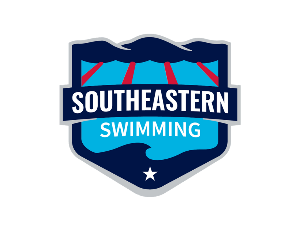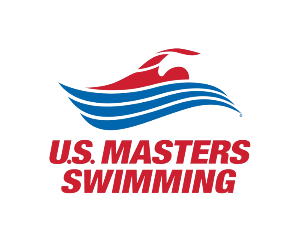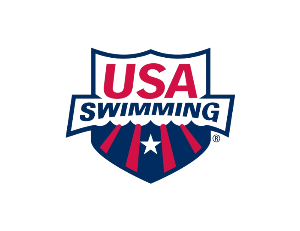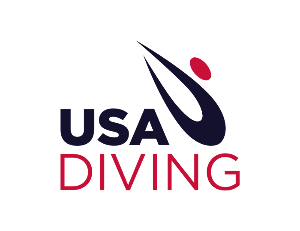Swimming Glossary
AGE GROUP SWIMMING - The program through which USA Swimming provides fair and open competition for its younger members. It is designed to encourage maximum participation, provide an educational experience, enhance physical and mental conditioning, and develop a rich base of swimming talent.
ANCHOR - The final swimmer in a relay
ATTACHED - A registered USA swimmer who is attached to a registered USA Swimming swim team.
BACKSTROKE FLAGS - Pennants that are suspended over the width of each end of the pool approximately five yards/meters from the wall that notify backstroke swimmers that they are approaching the end of the pool.
BUTTON - The manual timing system stopping device that records a back-up time in case the touch pad malfunctioned. The button is at the end of a wire, plugged into a deck terminal box. It is the timers’ responsibility to push the button as the swimmer finishes the race. Sometimes it’s referred to as a pickle or plunger.
CHAMPIONSHIP MEET - A meet held at the end of a season. Qualification times are usually necessary to enter meet.
CHECK-IN - The procedure required before a swimmer swims an event in a deck-seeded meet. Sometimes referred to as positive check in, the coach will mark each swimmer’s name on a list posted by the meet host. Once a swimmer is checked in, they must swim the event, or they will be scratched from his/her next event.
CIRCLE SEED - In a meet with both preliminary and finals sessions, the fastest three heats of each event in prelims is circle seeded. That means the fastest swimmer is in the center lane in the fastest heat, the second fastest swimmer is in the center lane in the next-fastest heat, the third fastest swimmer is in the center lane in the third-fastest heat. The fourth fastest swimmer will swim in the fastest heat next to the fastest-seeded swimmer. The fifth fastest swimmer will swim in the next-fastest heat next to the second fastest-seeded swimmer, and so on until the three heats are filled up. This is opposed to the normal slowest to fastest seeding in the rest to the heats (used in a Timed Finals format).
CIRCLE SWIMMING - Swimming to the right of the black line so that you 'circle' the lane. This is the usual method for practices and warm-ups.
CLERK OF COURSE - The USA Swimming-certified official responsible for deck seeding and organizing swimmers into heats (usually this role is filled by a parent-volunteer). Also, where scratches and relay cards are turned in and on-going meet information is available for the coaches.
CLUB - A registered swim team that is a dues paying member of USA Swimming and the local LSC
DECK SEEDING - The process of organizing swimmers into events, heats, and lanes (by the Clerk of Course) at the meet as it progresses (as opposed to pre-seeding prior to the meet).
CODE OF CONDUCT - an agreement between swimmer and club, stating that the swimmer/parent will abide by certain behavioral guidelines
CUT (STANDARD) - slang for Qualifying standard; a time set for entry into a swim meet or event
DEHYDRATION - The abnormal depletion of body fluids (water). This is the most common cause of cramps and sick feelings
DISQUALIFICATION “DQ" - The loss of points and a time due to an infraction of the rules that govern the meet.
ENTRY FEE - a set fee paid to swim each event of a meet
FALSE START - occurs when a swimmer is moving at the start of a race, prior to the starting signal. In USA Swimming, one false start will result in disqualification.
15-METER MARK - Marks on the sides of the pool and on the lane lines 15 meters from the ends of the pool. In freestyle, backstroke and butterfly events, the swimmer must surface at or before these marks.
FINA - Federation International de National de Amateur, the international governing body of competitive swimming, diving, water polo and synchronized swimming.
FLY OVER STARTS - Start procedures at a meet in which swimmers in the previous heat remain in the water, close to the wall, during the start of the next heat. Usually used in senior sessions/meets to save time and/or allow swimmers to rest before exiting the pool
FREESTYLE RELAY - In the freestyle relays, four swimmers in each swim one fourth of the total distance. As in the medley relay, no individual may swim more than one leg of the relay
HEAT - In competitions, each event (i.e. the 50 freestyle) will be divided into heats of swimmers based on the number of lanes available and the swimmers' times. In most competitions, the heats progress from slowest to fastest.
HEAT SHEETS - A printed program of events including the entry time and assigned heat and lane for each swimmer in an event. Heat sheets are for sale at most meets.
IM – Shortened name for Individual Medley; an event in which the swimmer must do all four strokes in the following order: butterfly, backstroke, breaststroke, freestyle.
LANE LINES - Continuous floating dividers stretched from the start end of the pool to the turn end, used to delineate the individual lanes.
LAP COUNTER – A set of plastic numbers submerged at the far end of the pool to help swimmers in distance freestyle events keep track of laps. A volunteer counter (usually a parent or teammate) flips the numbers after each lap and places them in the water while the competitor swims toward them. The numbers are pulled out before the swimmer completes his/her flip turn.
LENGTH/LAP - Technically, a length is once across the pool; a lap is across and back. However, most coaches use the terms interchangeably to mean simply once across the pool. Thus, 4 lengths in a 25-yard pool would be swimming across the pool 4 times, totaling 100 yards.
LONG COURSE - A pool 50 meters in length. USA Swimming conducts most of its summer competition in long course and is the format for the Olympics Games.
LSC – Local Swim Committee, the governing body that oversees swimming at the local level. There are 59 LSC’s in the country. Our LSC is Southeastern Swimming, Inc.
MARSHAL - The officials who control the crowd and swimmer flow at a swim meet. They are primarily responsible for safety in the venue and are usually trained parent volunteers.
MASTERS SWIMMING - A program for swimmers aged 19 and older. At TNAQ, our Masters group is open to all levels of experience and includes the full spectrum from people learning to swim for fitness, to triathletes, all the way up to those competing at the national level. Practices are divided into experience levels. Age groups are in five-year increments. Find out more on our Masters tab.
MEDLEY RELAY - A four-person relay in which one swimmer is assigned each of the four strokes in the following order: backstroke, breaststroke, butterfly, freestyle. No swimmer may swim more than one leg of the relay.
NT - No Time - Abbreviation used on a heat sheet to designate that the swimmer has not swum that event before and does not have an official time of record.
OFFICIAL - A judge on the deck of a pool at sanctioned and approved competitions that enforce USA Swimming rules. There are stroke and turn judges, administrative officials, starters, timers and referees.
OPEN WATER SWIMS – Swimming events conducted in a natural body of water, such as a lake, river or ocean.
PERSONAL BEST - Often called a 'PR,' the best time a swimmer has achieved so far in a given event.
POWER POINTS - Every swim listed in the USA Swimming times database includes a Hy-Tek Power Point value. This point system allows for comparison of the quality of the performance across all strokes, distances, and events, as well as between age groups. The power point scale ranges from 1 to 1100 points. The higher the points, the stronger you are in that event
PRELIMINARIES (PRELIMS) - Also called trials. Races in which swimmers qualify for the finals to typically be swum later in the day. Swimming Terminology
PROOF OF TIME - A requirement some meets have to make certain that swimmers have legally met the time standards for that meet. Monetary fines are sometimes assessed for a failed swim at meets if the entry time can’t be proven.
PSYCH SHEET - A list of the order of events by session with swimmers listed according to their entry times (usually fastest to slowest). It does not show heats. The psych sheet is usually provided electronically prior to the meet.
QUALIFYING TIMES - Published times that must be achieved during a given period in order to enter certain meets.
REFEREE - The head official at a meet that makes all final decisions based upon USA Swimming rules.
SANCTION – A competition or time trial must be sanctioned (approved) by USA Swimming (through the Local Swim Committee) for the times swum to count and to be used in other sanctioned meets.
SCRATCH - To withdraw from an event (with the forfeit of the entry fee), only to be done/approved by the coaching staff.
SEEDING TIMES - The time a swimmer uses to enter a meet. This time determines one’s heat and lane in the particular event.
SESSION - Portion of meet distinctly separated from other portions by time (usually a morning or afternoon set of events for different age groups).
SHORT COURSE (SC) - A pool 25 yards/meters in length. USA Swimming conducts most of its winter competition in short course.
SOUTHEASTERN SWIMMING, INC. – The name of the Local Swimming Committee (LSC), charged by USA Swimming to govern competitive swimming in the state of Tennessee.
SPLASH MAGAZINE - The USA Swimming magazine that is mailed bi-monthly. (A benefit of being a member of USA Swimming).
SPLIT - A time taken at an intermediate distance, e.g., a 50-yard time for a 100-yard race, or the time of one individual in a relay.
STARTER - A Certified Official responsible for starting each event and being sure that each start is fair for all participants.
STOP WATCHES - watches used to time the swimmers during a competition. When automatic timing equipment is used, watches serve as a back-up method.
STREAMLINE - the position used to gain maximum distance during a start and/or push-off from the wall in which the swimmer's body is as straight and tight as can be.
STROKE AND TURN JUDGE - A Certified Official that walks the deck or stands at the end of the pool during a meet to certify the legality of individual strokes and turns.
STROKE DRILL - an exercise involving a portion or part of a stroke, used to improve technique
SWIM-OFF - A tie-breaking swim between competitors. Usually used in a prelims and finals format to determine which swimmer advances to the finals, or to determine the order of priority of tied alternates.
TIME STANDARDS – USA Swimming establishes motivational time standards for each age group every four years. The current standards will be in place until August 31, 2016 and are available on USA Swimming’s website here. Time standards and age determine the type of meet in which a swimmer may participate. Age group standards progress from (slower to faster) B, BB, A, AA, AAA, and AAAA. In addition, there are specific time standards for various championship meets that will be provided as appropriate for your swimmer.
TIME TRIALS - Some competitions offer swimmers an extra opportunity to swim a race with the sole purpose of trying to get a time standard. Signing up for a Time Trial must be approved by the coach.
TIMED FINALS - Competition in which only heats are swum and final placings are determined by those times.
TNAQ - The official abbreviation for Tennessee Aquatics for use on heat sheets
TOUCH PAD - A large pad at the end of each lane that registers a swimmer's touch and communicates electronically to the timing system.
UNATTACHED – A registered swimmer who is not attached to a registered USA swim team. If a swimmer changes teams, that swimmer must swim unattached for 120 days from the last day of he/she swam in competition representing the former team.
USA SWIMMING, INC. – The National Governing Body that regulates our sport. All TNAQ swimmers are registered with USA Swimming and each has been assigned an identification number. This USA Swimming registration expires at the end of each year. This is the organization that sends swimmers to the Olympic Games. USA Swimming is a member of FINA.
USA SWIMMING CARD/NUMBER - A membership card with a unique number assigned to a swimmer when he/she joins USA Swimming. The formula for deriving a swimmer’s USA Swimming number includes the birth date (6-digit format MM/DD/YY), first three letters of the first name, middle initial, and first four letters of the last name. For example: John A. Smith was born September 1, 1959. His USA Swimming number would be: 090159johasmit
WARM-DOWN - Low-intensity swimming used by a swimmer after a practice, set or race to rid the body of excess lactic acid, and to gradually reduce the heart rate and respiration.
WARM-UP - Low-intensity swimming used by a swimmer prior to a practice, set or race to get muscles loose and warm and gradually increase heart rate and respiration.








